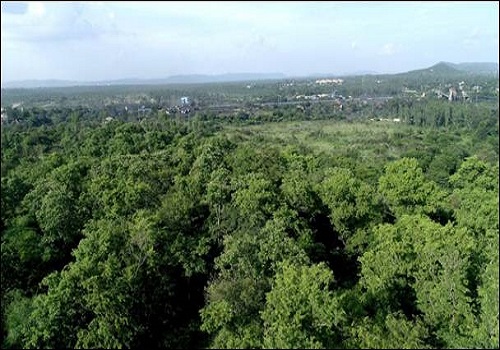Coal PSUs enhance green cover with 235 lakh trees across 10,784 hectares

Coal PSUs have planted more than 235 lakh saplings over an area exceeding 10,784 hectares in the five-year period FY 2019-20 to FY 2023-24 till January, thus enhancing the country’s carbon sink significantly, the Ministry of Coal said on Thursday.
The government-owned coal/lignite PSUs led by Coal India Ltd have not only increased their production levels over time to meet the growing energy demands of the nation but have also demonstrated their commitment to the local environment by implementing a range of mitigation and sustainable measures, the ministry said.
As part of sustainable greening initiative, the PSUs have undertaken extensive plantation programmes with native species across various sites, including overburden (OB) dumps, haul roads, mine peripheries, residential colonies, and available land outside the lease area. Collaborations with scientific institutions ensure that plantation efforts are backed by expertise, facilitating the development of eco-restoration sites and the implementation of multi-tiered plantation schemes.
Satellite surveillance is being used to monitor reclamation performance.
The plantation programme adopts a diverse approach, encompassing shade-giving trees, species for forestry purposes, medicinal and herbal plants, fruit-bearing trees, timber value trees, and ornamental/avenue plants. Fruit-bearing species, along with medicinal plants, not only contribute to biodiversity conservation but also provide additional socio-economic benefits to local communities.
Fruit bearing species such as Jamun, Imli, Ganga Imli, Bel, Mango, Sitaphal etc., medicinal/herbal plants such as Neem, Karanj, Aonla (Amla), Arjun, etc., timber value trees such as Sal, Teak, Shivan, Ghamar, Sissoo, Kala Sirus, Safed Sirus, Bamboo, Peltoforam, Babool, etc., ornamental/avenue plants such as Gulmohar, Kachnar, Amaltas, Peepal, Jharul, etc. Moreover, close collaboration with state forest departments and corporations ensures that the best-suited species are selected for plantation, ensuring the success and sustainability of reclamation efforts.
Recently, coal/lignite PSUs have also adopted the Miyawaki plantation method in its suitable command areas. The Miyawaki technique is a distinctive approach to afforestation and ecological restoration, pioneered by Japanese botanist Dr. Akira Miyawaki. Its primary goal is to enhance green cover within a limited area. This innovative method aims to establish a dense forest in just 10 years, a process that typically requires a century. It involves cultivating multi-layered forests that exhibit rapid growth and replicate the natural biodiversity found in native forests.
Implementation of the Miyawaki technique entails planting two to four varieties of indigenous trees per square meter. Notably, the selected plant species are largely self-sustaining, eliminating the need for regular maintenance such as fertilisation and watering. Within this method, trees achieve self-sustainability, reaching their height within a remarkable three-year timeframe. The interdependence among plants supports growth each other, promoting overall health and vitality. As a result, trees exhibit a growth rate much faster than conventional methods and contribute for creating a heightened carbon sink.
Mahanadi Coalfields Limited (MCL) adopted Miyawaki method in Kulda OCP of MCL at Subalaya village at Sundergarh range. DFO, Sundergarh is undertaking Miyawaki technique of plantation in two patches at 10 Ha at a density of 8000 saplings per Ha. Species planted in Miyawaki forest in Kulda OCP is such as Arjun, Asan, Phasi, Sal, Bija, Karanj, Dhauda, Gamhar, Mahogany, Ashok, Patali, Chhatian, Dhuranj, Harra, Bahera, Amla, Guava, Mango, Jackfruit, etc. Further, coal/lignite PSUs have taken up about 15 Ha of Miyawaki plantation in and around coal mines in the current fiscal year.






















